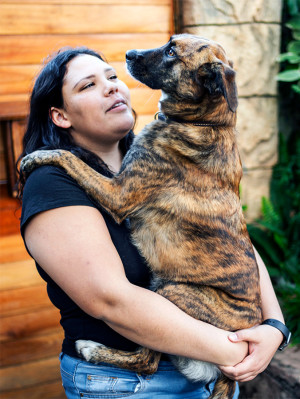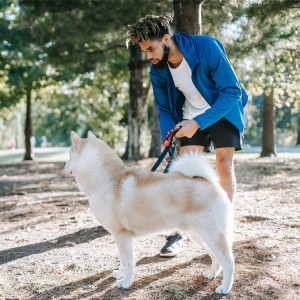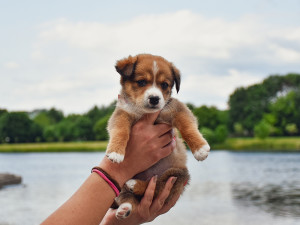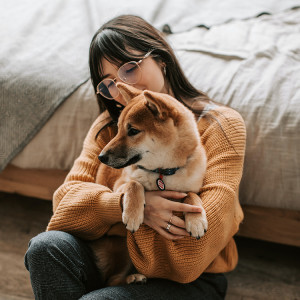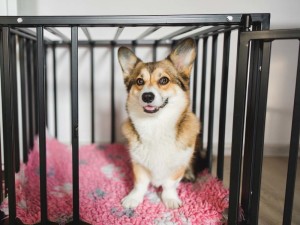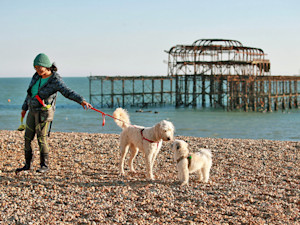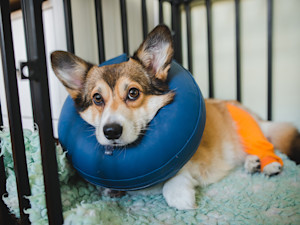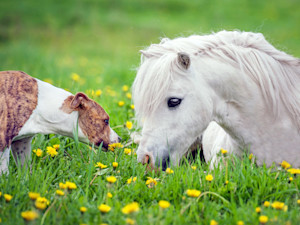So You’re Off On Holiday – Here’s How to Prepare Your Dog for a Daycare Staycation of Their Own
A guide to a stress-free break – for you and your pup
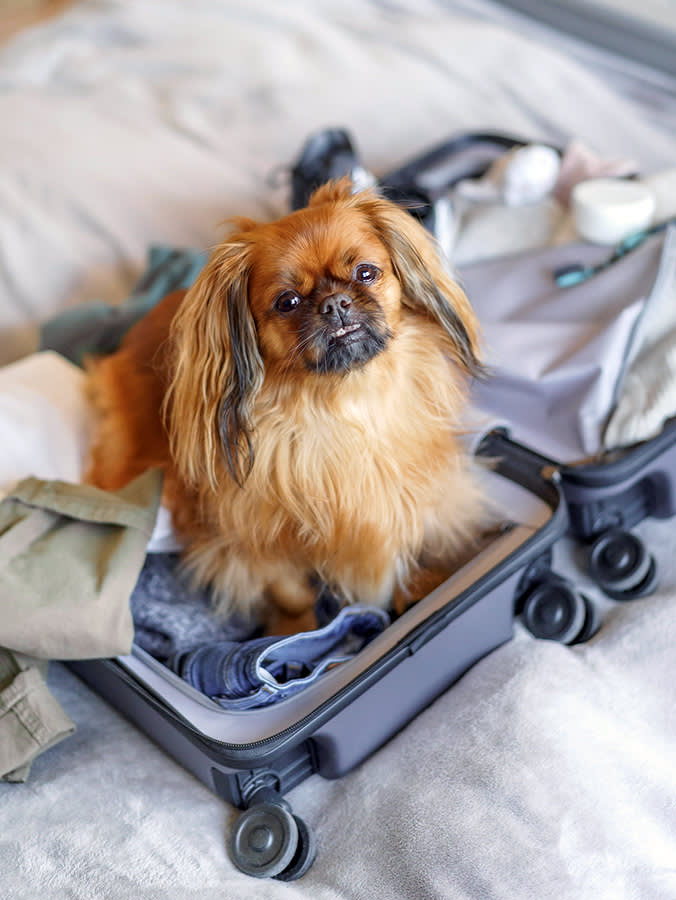
Share Article
With summer holidays just around the corner, many pet parents are planning summer holidays and trips abroad (who can blame them with the British weather?), and considering daycare options for looking after their beloved pups whilst they’re away.
While the thought of leaving your dog in someone else’s care can be nerve-wracking, the right preparation can ensure that both you and your dog have a stress-free experience, and you can enjoy your holiday without any worries. As you pack your bags, we break down how to get your dog ready for their kennel or daycare adventure.
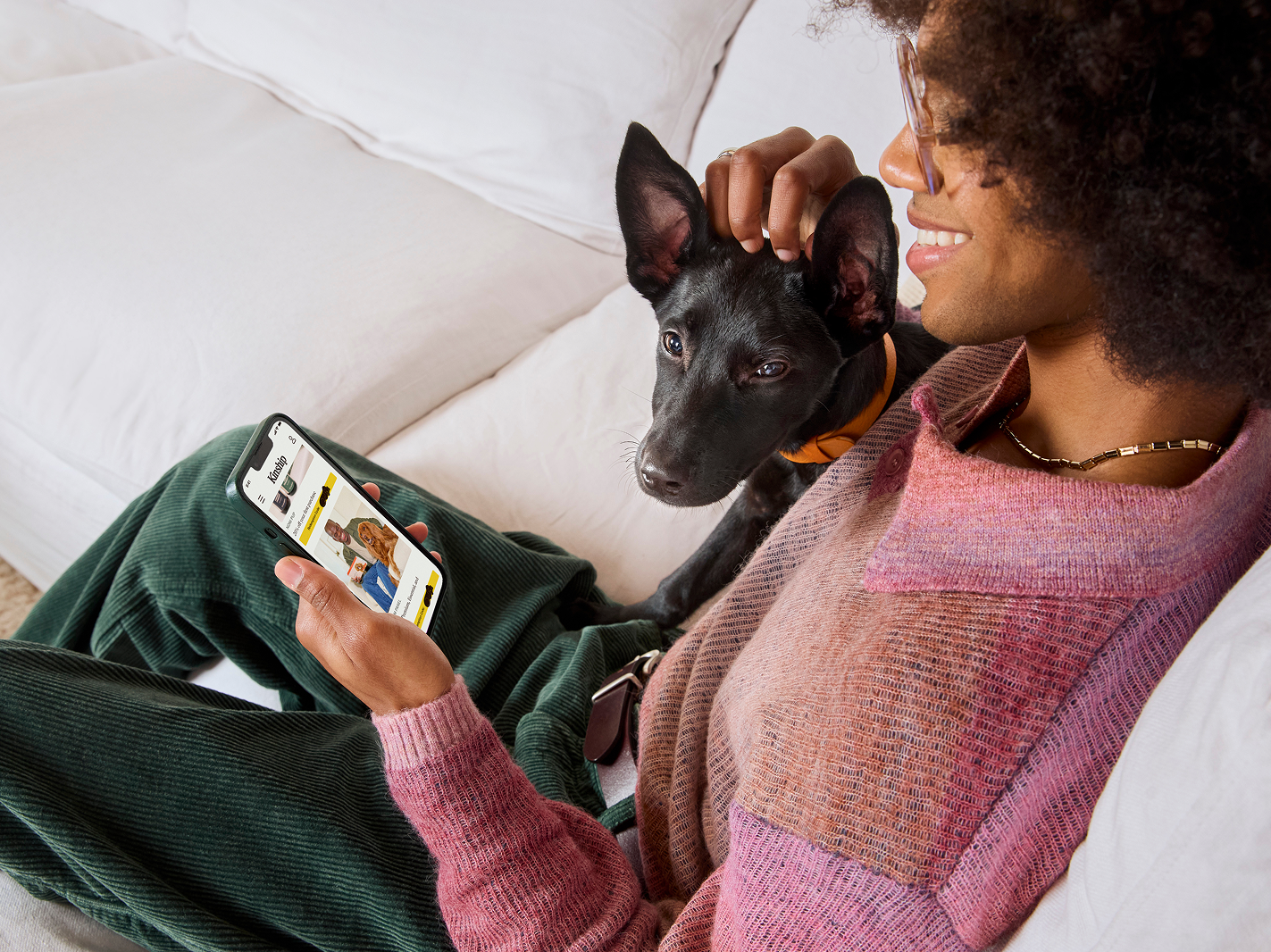
Get (totally free) deals for food, treats, accessories, tech and way more pet parenting must-haves.
opens in a new tabHow to find the right facility and spot red flags
First things first, find the right kennels or daycare for your dog. Recommendations from friends, family and trainers can carry a lot of weight, but doing your own research in relation to your own pup is essential, too. If they have an anxious soul, for example, how long are dogs left alone for? For a reactive pup, how many dogs are in a group at one time?
Generally speaking, it’s important to watch for certain red flags and positive indicators when looking at a potential kennel or daycare. Unhappy dogs, dirty environments or unclean water bowls are signs to steer clear, for example, whereas happy dogs that are playful and comfortable, well-maintained and clean surroundings, and staff actively interacting with the dogs are positive indicators that the facility is a good choice. However helpful research, reviews and recommendations might be in narrowing down your search, visiting is an absolute must for getting a feel for the place on behalf of your pup.
Veterinary nurse and pet behaviour expert, Zoe Blakeopens in a new tab, emphasises the importance of taking a tour. “A tour of the facility is a must to ensure it meets your standards for hygiene, safety and comfort. Check that the facility has the appropriate licence, is insured and has trained staff.”
“Visit first to get a feel of the place – go a couple of times if you aren’t sure, at different times of day,” agrees Ria Edmenson, dog trainer and founder of Colin & Co. daycareopens in a new tab and stays. Ria also suggests making your visits on your own, without your pup at the beginning. “Make sure as soon as the dog goes in its purely positive associations,” she says. “For example, we ask for no dogs on tours as the other dogs may bark at the client and make the visiting pup nervous, setting them up for a negative association when they return.”
“The client is also not focusing 100 percent on looking at the daycare, as they are looking for reactions from their dog and seeing if the dog likes it or not,” she adds. “The dogs don’t bark at staff members as they know them, so the staff members bring the dog in for the first trial day to ensure positive association happens right from the start, to set them up for success!”
Essential questions to ask
During your initial visit to a kennel or daycare (sans pup, of course), ask the staff essential questions to ensure the facility meets your needs and standards, and take note as to whether their responses match what you see. On the admin side of things, confirm their insurance and licence details, enquire about their emergency protocols and check if staff hold relevant qualifications. Additionally, request a trial period if one isn’t offered, understand their drop-off and collection policies, vaccination requirements and how they deal with different sizes, age and temperaments of dogs.
“How happy are the dogs with other dogs and staff, how many dogs are in one area, what is the staff to dog ratio? (It should be 1:10 by law.) What do the staff do in an emergency? What are the rules on aggressive dogs? What treats do they use? Do you need to provide anything? Do they take intact males and bitches in season? How long is a day for them? What does a day look like?” Are all questions to ask yourself and the facility, says Ria.
Introduce your dog to the facility
Once you’ve picked the perfect holiday destination for your pup, it’s time to introduce your dog to the facility and staff members in a positive way. “Try and organise short visits to the new environment to gradually introduce the dog to the new setting,” says Zoe. “And always use positive, reward-based training.”
Organise a trial session, day or week with the facility for your pup and monitor their behaviour to ensure they are adjusting well. Zoe recommends gauging how they seem on collection and once back home. Notice if they remain hyperactive or restless and look out for any gastrointestinal issues, which might indicate stress. Regularly checking on these signs will help you determine if the environment is suitable for your dog.
Ria says this step is “absolutely essential” for a successful introduction and relationship with the facility and staff in the long term. “In fact, we won’t take a dog that hasn’t had a trial, and they have a week’s probation (or five sessions) before they can pass!” she says. “Look for updates or ask for one if they haven’t given one, and don’t be afraid to ask loads of questions – some places have CCTV for you to check-in periodically, too.”
“Check any social media pages and ask for regular updates,” she adds. “We send multiple picture messages throughout the day via WhatsApp so pet parents know exactly how happy their dog is and what they’ve done, with a behaviour report card at the end of the week so the pet parent knows what’s happened, what highlights and lowlights they’ve had and can monitor their training/behaviour,” says Ria.
How to train your dog for daycare
Preparing your dog for kennels or daycare doesn’t have to be a chore, but does require a little extra input from you and your pup. With careful planning and consideration, you can help your dog have a positive and enjoyable experience at their new home away from home.
“Practising leaving your dog alone for short periods can help them with the transition,” says Zoe. “Always use positive reinforcement and reward calm behaviour with treats and praise.”
Make sure your dog is socialised properly
Socialisation is critical in preparing your dog for a kennel or daycare environment. They’re effectively going into a huge social overload head on so getting them accustomed to being around other dogs and people (whether they know them or not), can reduce anxiety and behavioural issues. “Socialise them, get their obedience up as much as possible, get them used to big groups of dogs playing and check for any resource guarding with lots of other dogs,” says Ria.
Top up on training
It goes without saying that making sure your pup’s manners are up to scratch should be at the top of your list of preparation for any sleepover, whether at a friend’s or family members, or daycare and kennels. Make sure your dog responds well to basic commands (and staff are aware of those commands), are toilet trained and get your dog used to car or van ridesopens in a new tab.
“Get the dog ready for a crate as some daycares or kennels (definitely) will use crates for downtime,” adds Ria, and make sure they’re comfortable “being touched around the neck/harness area so staff can pop a lead on and the dogs aren’t scared.”
Address behavioural issues and anxiety
Introducing your dog to situations that might replicate their staycation can help anxious dogsopens in a new tab feel more comfortable in a kennel or daycare setting. For example, start by watching groups of dogs play before joining in, says Ria.
“Work with a trainer to get the dog happy with a large group of dogs, slowly so as not to trigger more anxiety in the dog,” she adds. “Go to the park and watch a large group of dogs play to start with and go from there, getting closer and closer with treats or toys (whatever the dog likes), until they can engage.” Positive reinforcement is key; if the dog shows signs of stress, take a step back and try again later.
“Sometimes dogs are a bit stressed to start with as it’s a big change for them, but if there is no improvement it will always be in the best interest of the dog if they are stressed at daycare to remove them from the environment and seek alternative care,” says Ria.
Train yourself
Excuse me? Yes, train yourself. Remember: you’re more aware of what is going on than your dog. So those ‘subtle’ feelings of guilt about leaving them manifesting as more and more cuddles and treats? Not actually very helpful in the long run.
“Often trying to comfort them will make it worse – as they really won’t want you to leave then!” says Ria. “Often dogs won’t want to leave their humans in the moment, so might not want to go at first, but are fine once they’re at daycare.”
“Always remain calm and positive to prevent the dog from picking up on your own anxiety,” adds Zoe. “Keep the drop off quick, relaxed and positive to reduce the stress.”
Pack appropriately
Much like us humans, packing the right items can make your dog’s stay more comfortable. Along with essentials such as any necessary medications with clear instructions, a correct-fitting collar and ID tag, vaccination records (if needed) and food, Ria advises packing “something that smells of home and any comfort toys they have so they settle quicker”.

Orla Pentelow
Orla Pentelow is Kinship UK’s Senior Editor. She has previously written for British Vogue, Bustle, Yahoo and The Telegraph. When not at her desk liking dog videos she’s out and about with her rescue pup, Luna, who works primarily as chief distractor.
Related articles
![]() opens in a new tab
opens in a new tabHow to Keep Your Dog Cool This Summer as Animal Charities Warn of Hot Spell
Animal welfare charities and veterinary organisations have teamed up to urge on pet parents to get clued up ahead of the warm weather
![]() opens in a new tab
opens in a new tabDog-Friendly Holidays in Brighton
Heading to the vibrant seaside city of Brighton? Here’s where to eat, sleep, play and walk with your pup
![]() opens in a new tab
opens in a new tabHow to Keep Your Dog Happy On Cage Rest
It doesn’t have to be all doom and gloom...
![]() opens in a new tab
opens in a new tabDog-Friendly Holidays in the New Forest
Heading to the picturesque wild pony-filled New Forest? Here’s where to eat, sleep, play and walk with your pup
